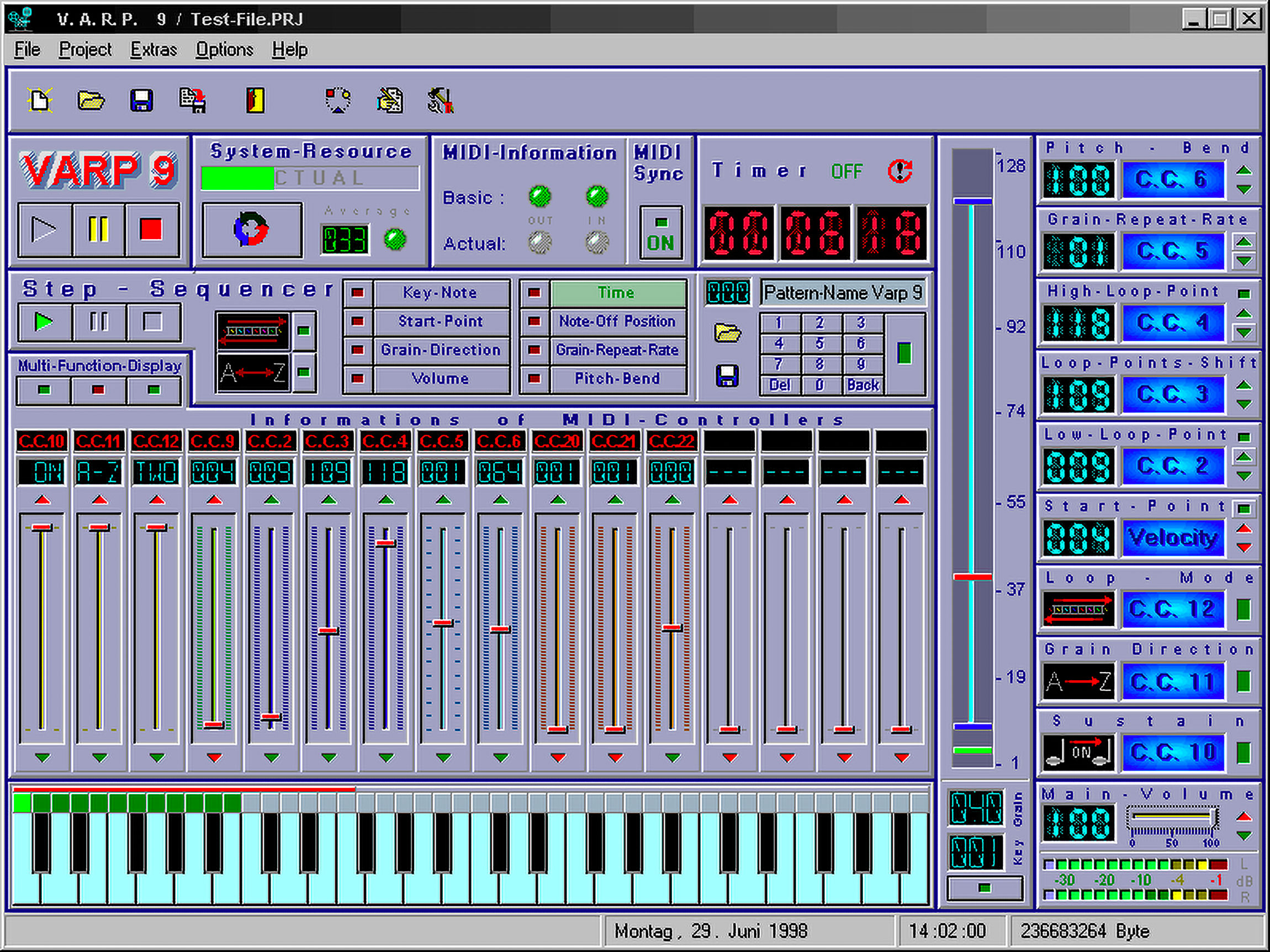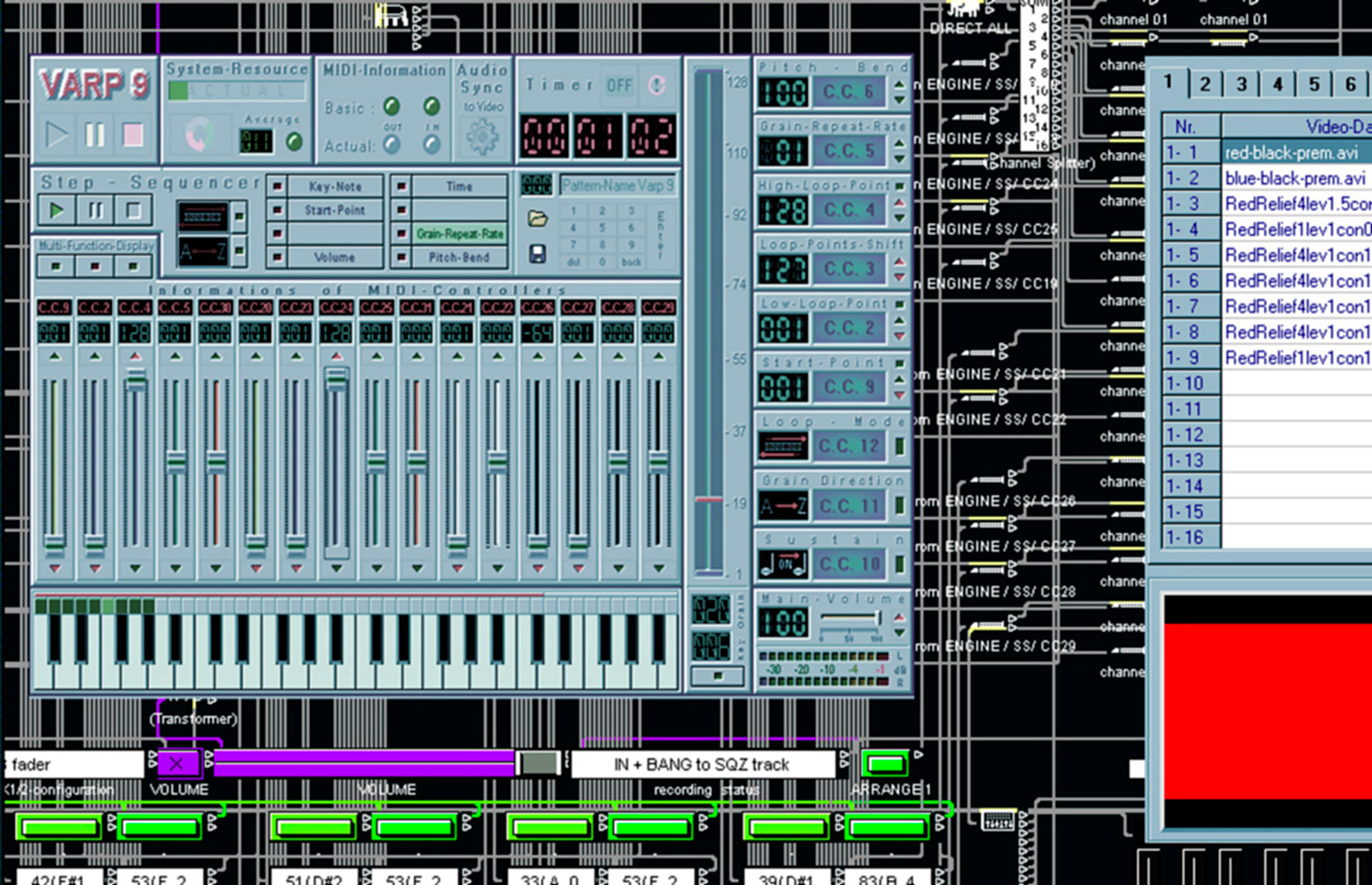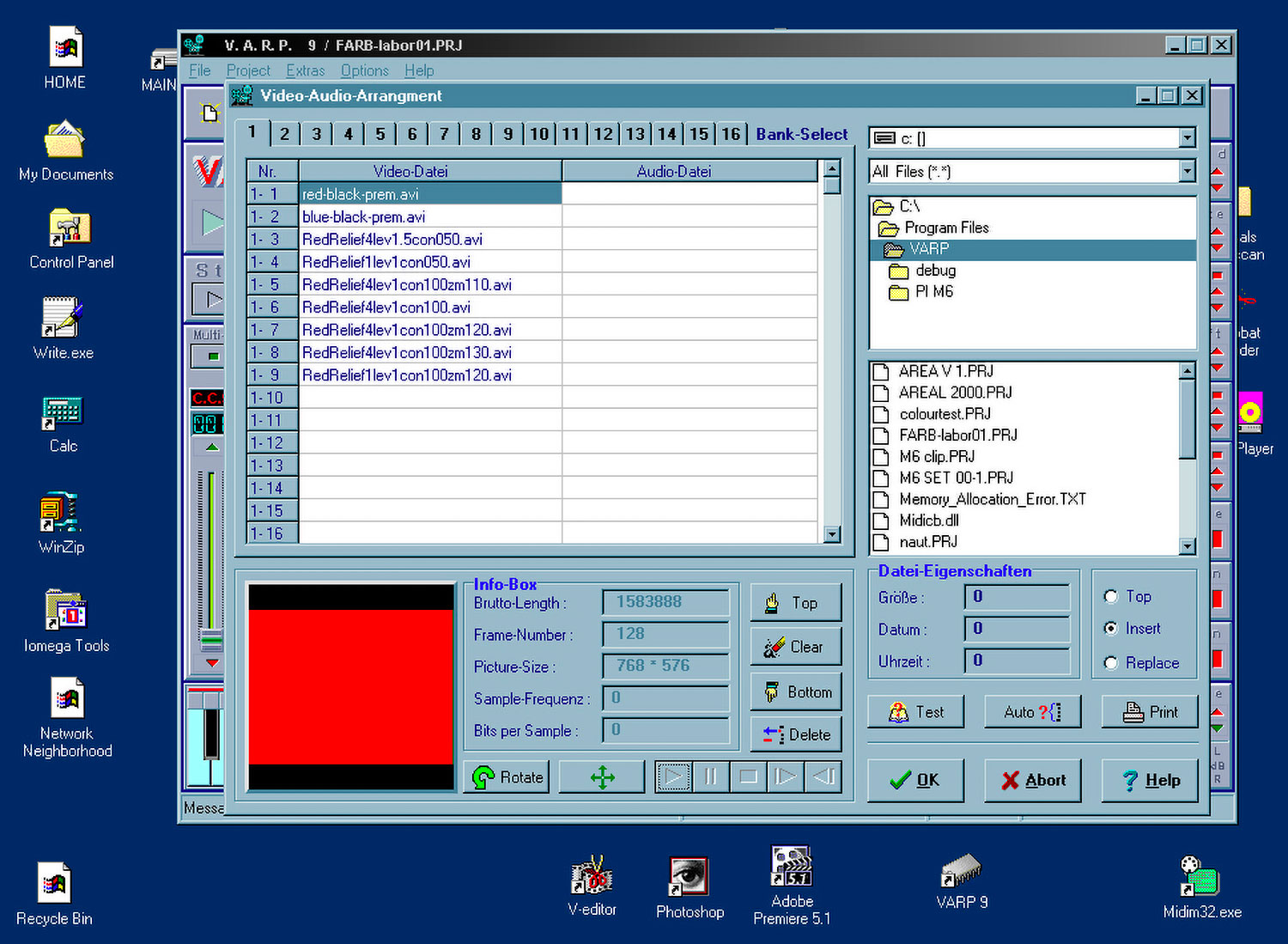


VARP 9
VARP 9 was a unique audio-video re-synthesis software, developed from ground up by Kurt Hentschläger, Ulf Langheinrich and Dirk Langheinrich in 1997-1999. The software became the audiovisual live instrument at the heart of NOISEGATE, POL, SINKEN, FELD, RESET, LUX and MINUS and was used for both studio compositions and real time AV live shows via hardware midi controller fader banks and sequencers.
It was a sample based MIDI software instrument that addressed both video and audio in, at the time, large scale RAM-banks. It processed in realtime full PAL video resolution and frame rate. It allowed accessing, combining and re-allocating single audio video frames at 25f/sec. At that video “grain rate” it was capable of audiovisual granular synthesis.
The structure of the program resembled in many of its parameters an audio sampler. The specialty of VARP 9 was its flicker engine, which could mix with each other, frame by frame, 2 discrete video/sample streams, as if 2 videos were intersecting each other.
The MIDI controllable parameters of the program were:
CC 07: general parameter: volume.
CC 11: general parameter: grain sequence direction.
CC 12: general parameter: loop mode.
CC 10: general parameter: ignore note off / follow note off.
CC 70: general parameter: control start points by velocity / CC09.
CC 03: general parameter: shift all loop points.
Note number [00...48]: number of first grain sequence.
CC 09: first grain sequence: start point.
CC 02: first grain sequence: low loop point.
CC 04: first grain sequence: high loop point.
CC 05: first grain sequence: repeat rate per grain.
CC 30: first grain sequence: horizontal shift within array of sequences.
Note number [00...48]+48: number of second grain sequence.
CC 20: second grain sequence: start point.
CC 23: second grain sequence: low loop point.
CC 24: second grain sequence: high loop point.
CC 25: second grain sequence: repeat rate per grain.
CC 31: second grain sequence: horizontal shift within array of sequences.
CC 21: insert grains of second sequence into first sequence: frequency.
CC 20: overwrite grains with silent black or silent white: frequency= amount of grains per insert.
CC 21: insert grains of second sequence into first sequence: difference in amount of grains per insert between first and second sequence.
CC 26: overwrite grains of first/ second sequence with patterns of silent black/ silent white: general frequency.
CC 27: overwrite grains of first/ second sequence with patterns of silent black/ silent white: duration of overwriting partition.
CC 28: overwrite grains of first/ second sequence with patterns of silent black/ silent white:
Creates various patterns of black and white from total black-via total flicker to total white.
CC 29: overwrite grains of first/ second sequence with patterns of silent black/ silent white: Shift overwriting partition.

